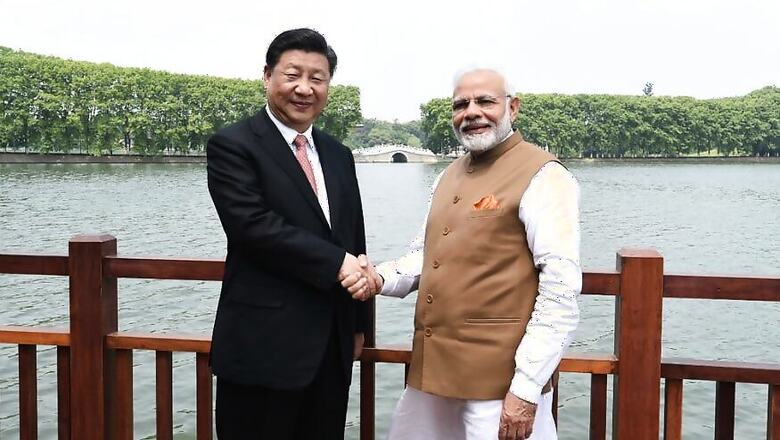
views
Informal summits have now become the preferred modus operandi when it comes to meetings between India and China. From Sabarmati to Wuhan and now Mamallapuram. It gives a chance to both leaders to shun all the formality and strait-jacketed nature of traditional diplomacy.
So optics and personal chemistry are given far bigger weightage than actual outcomes. Problem with informal summits is that there’s no way of figuring out what tangible thing, if any, was achieved. There is no joint declaration, no formal statement, no press interaction at the end of the informal summit, so there’s no way to assess what’s been achieved and what more needs to be done.
The India-China relationship is now all about managing differences in the relationship. It’s like a bad marriage which neither party wants to call off.
The Wuhan summit happened some months after the Doklam standoff. It was the first time the two principals were meeting. It was about putting the relationship back on track after the longest stand off since the 1962 war.
So both - Prime Minister Narendra Modi and President Xi Jinping - were sending out a message to their respective bureaucrats and citizens at large that all is well at the top, therefore, this same spirit should trickle down the ranks. Unfortunately just personal chemistry at the top is not a good enough glue to keep the relationship going.
This time too, both leaders will be meeting under tenuous circumstances. This will be the first meeting post the abrogation of Article 370. There are serious differences in the way both sides see it. India sees it purely as an internal matter while China calls it a ‘unilateral change of status quo’.
Initially, China was worried about what impact this will have on Ladakh and China’s own claim to parts of the plateau. But after seeing the response of Pakistan, China has gone with the Pakistani position, hook, line and sinker. China was the first country to openly articulate its opposition at the UNSC informal consultations. It also reiterated it when their foreign Minister spoke at UNGA. And they have said it in the joint declaration after Imran Khan’s visit to Beijing. In fact the latest statement saying Xi is ‘watching the situation closely’ makes him sound like a schoolboy prefect of Asia.
Imran Khan’s visit itself was hurriedly rushed through before Xi’s trip to Chennai. It was to give the impression to India that as far as China is concerned, India will always be hyphenated with Pakistan. India and Pakistan will be put in the same strategic box.
After all, India is the only power in the region that can be a counter weight to China in the long run. The longer it is boxed with Pakistan, the longer it is going to take India to challenge China’s primacy in Asia. China sees the next 30 years as the years of the G2, US and itself. Last thing Beijing wants is a challenge in its own backyard.
Scholars in Tsinghua University had first come up with this hypothesis that America’s rise after World War 2 was driven by the fact that no country could challenge America on either coast, either on the Atlantic or on the Pacific.
China too, like America, has superpower ambitions. India is the only country that could conceivably pose a challenge to those ambitions, thereby helping America continue with its unipolar power status.

















Comments
0 comment